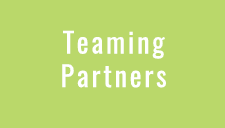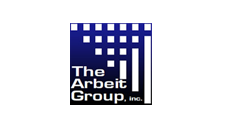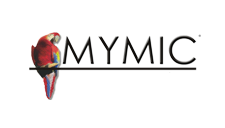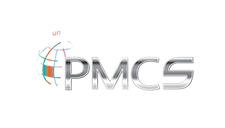The Chief Information Officer – Solutions and Partners 3 (CIO-SP3)
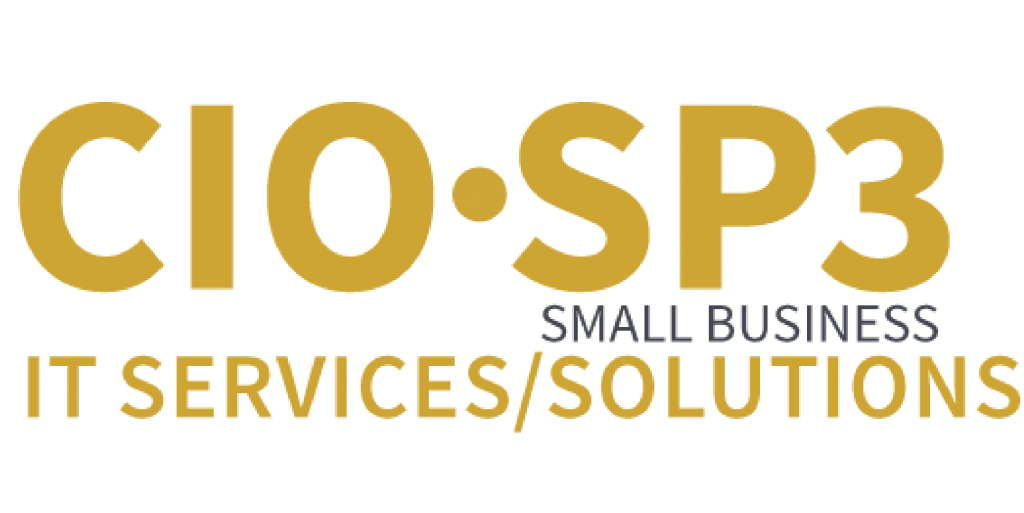
The Chief Information Officer – Solutions and Partners 3 (CIO-SP3) is a 10-year Small Business Government-wide Acquisition Contract (GWAC) with a $20 billion ceiling. The contract vehicle is sponsored by the US Department of Health and Human Services (HHS), National Institutes of Health (NIH) Information Technology Acquisition and Assessment Center (NITAAC). As an acquisition tool, the CIO-SP3 vehicle provides federal or civilian agencies a mechanism for efficiently ordering IT solutions and services at equitable and reasonable prices, while helping to achieve their socio-economic contracting goals. Furthermore, the CIO-SP3 task areas are designed to support the Federal Enterprise Architecture (FEA) by supporting all IT services described in the FEA. CIO-SP3 task areas include: Health IT, CIO Support, Imaging, Outsourcing, IT Operations, Integration Services, Critical Infrastructure Protection and Information Assurance, Digital Government, Enterprise Management Systems, and Software Development. NGEN was awarded this contract in the 8(a) category.
To learn more about the CIO-SP3 Small Business GWAC at the NITAAC visit their website: NITAAC CIO SP3 for Small Business.


Task Area 1 – IT Services for Biomedical Research, Health Sciences, and Healthcare
The objective of this task area is to support Biomedical Research, Health Sciences and Healthcare by performing studies and analyses and providing operational, technical, and maintenance services for the systems, subsystems, and equipment, some of which interface with, and are extensions to, information systems throughout the federal government. A comprehensive, but not limited, sampling of work to be performed under this task area is shown below:
- Health Sciences Informatic and Computational Services
- Health Communication Support Services and Enhancements to Facilitate Integration and Data Exchange at the Federal, State, and Local Level
- Integration of Health Systems Across Federal Agencies and Public and Private Healthcare Systems
- Modernization and Enhancement of Existing Health IT Legacy Systems
- Automation of Administrative and Clinical Processes
- Biomedical Information Services
- Biomedical Modeling, Visualization, and Simulation
- Biosurveillance and Disease Management Support
- Scientific Computing Services
- IT Clinical Support Services
- Telemedicine (e.g., mobile health/mHealth)
- Healthcare Payment Processes and Fraud and Abuse in Medical Claims
- Health Emergency Preparedness and Response to Include IT Support for Epidemic and Bio-Terrorism Simulations, Emergency Response Training, Exercise Support, etc.
- Security of Healthcare and Biomedical Research Systems
- IT Service Management
- Healthcare Systems Studies
- Natural Language Processing Software and Services (Biology/Medicine Focus)
- Medical Computer-based Training
- Standards Development for Health IT Services
Task Area 2 – Chief Information Officer (CIO) Support
The objective of this task area is to support Chief Information Officers (CIOs) in implementing laws, regulations, and polices and to facilitate evolving CIO practices. A comprehensive, but not limited, sampling of work to be performed under this task area is shown below:
- IT Governance Process Development and Management
- Workforce Management
- Capital Planning and Investment Control Support
- Independent Verification and Validation
- Agency Information Technology Architecture Support
- IT Portfolio Analysis
- Risk Management
- Program Analyses and Implementation (including Business Cases Analysis, Cost/Benefit Analysis and Cost Effectiveness Analyses)
- IT Organizational Development
- Program Management Office Support
- Advisory and Assistance Services
- FEA Alignment Support Services
- Market Research
Task Area 4 – Outsourcing
The objective of this task area is to provide the Information Technology (IT) infrastructure and IT services required to assume management and operations of government IT resources and IT business functions. A comprehensive, but not limited, sampling of work to be performed under this task area is shown below:
- Program Management
- Management of Call Centers
- Network Operations and Web Management Support
- Leasing of Hardware and Software
- Tools and Applications (including Application Service Provider)
- Hardware/Software Maintenance
- Transition Planning
- A-76 Studies Specific to IT Operations or Support
- Data Base Administration and Data Storage Management
- Backup and Recovery Services System Console Operations
- Production Control and Management
- Asset Management (including Radio Frequency Identification [RFID] Tracking)
- IT Acquisition Management
- Desktop Computing as a Unified Service
- Managed IT Services Support
- IT Impact Analyses
- Workflow Management
- Implementation of Standards (e.g., International Organization for Standardization (ISO) 9000, Capability Maturity Model Integration (CMMI), IT Services Management)
- Solution Leasing
- Software-as-a-service (SaaS)
- Cloud Computing
Task Area 5 – IT Operations and Maintenance
The objective of this task area is to support the operation and maintenance of IT systems, keeping IT systems viable with supported vendor releases or off-the-shelf applications software upgrades. Operations and maintenance on IT systems shall include all software and hardware associated with mainframes, client/server, web-based applications, and networking. A comprehensive, but not limited, sampling of work to be performed under this task area is shown below:
- Operational Support
- Software Maintenance and Upgrades
- Telecommunications Maintenance (Data, Voice, Images, including Wireless)
- Infrastructure Management Services (IMS)
- Configuration Management
- Network/Hardware Support
- Help Desk/IT Support
- Resource Management
- Backup and Recovery Management
- Installation, Configuration, and Tuning
- Electronic Software Licensing Services including license: deployment, management, tracking, upgrading, etc.
- System Management
- IT Training
- IT Operation and Maintenance Planning
- Data Quality Management
- Transformation Services
- Continual Service Improvement
- Balanced Scorecard for Operations
- IT Infrastructure Optimization
Task Area 6 – Integration Services
The objective of this task area is to support the development and deployment of integrated information systems, which includes the integration of technical components, information technology components, organizational components and documentation. Integration projects can support a wide range of agency functions. In the healthcare and research domain, medical imaging systems, patient management systems, clinical management systems, and laboratory management systems are often provided via integration of commercial components with existing infrastructure. A comprehensive, but not limited, sampling of work to be performed under this task area is shown below:
- Infrastructure Engineering, Development, Implementation, Integration
- Enterprise Application Integration
- Gap Analysis and Bench-marking
- Data Migration and Integration
- Acquisition Support
- Risk Assessment
- Open Source Integration
- Enterprise Data Management
- Collaboration Tools
- Business Process Re-engineering
- Test and Evaluation Services
- Financial Analysis
- Feasibility Studies
- Requirements Analysis
- System Design Alternative (SDA) Studies
- Systems Engineering
- Architecture Validation and Verification
Task Area 7 – Critical Infrastructure Protection and Information Assurance
The objective of this task area is to support and the protection of critical infrastructure, assurance of agency information, and operations that protect and defend information and information systems by ensuring confidentiality, integrity, availability, accountability, restoration, authentication, non-repudiation, protection, detection, monitoring, and event react capabilities. A comprehensive, but not limited, sampling of work to be performed under this task area is shown below:
- Cyber Security
- Critical Infrastructure Asset Identification and Configuration Management Databases
- Information Assurance of Critical Infrastructure
- Risk Management (Vulnerability Assessment and Threat Identification)
- Facility Protection Planning
- Information Systems Security
- Security Operations Center Development and Operations Management
- Application Security
- Disaster Recovery
- Critical Infrastructure Continuity and Contingency Planning
- Incident Response Planning and Execution
- Security Certification and Accreditation
- Training and Awareness Programs
- Exercises and Simulation
- Federal Information Security Management Act (FISMA) Implementation Support
- Health Insurance Portability and Accountability Act Implementation Support
- Cryptographic Support and Services
- Record Management
- Public Key Infrastructure
- Trusted Internet Connections implementation
- Security Review and Analysis of Automated Information Systems
- Identity Management and Assurance
- Intelligent, Automated Data Collection and Analysis
- IT Forensics and eDiscovery
Task Area 8 – Digital Government
The objective of this task area is to support government services that are provided through digital, electronic means, creating a transparent interaction between government and citizens (G2C government-to-citizens), government and business enterprises (G2B government-to-business enterprises) and government interagency relationships (G2G – government-to-government). A comprehensive, but not limited, sampling of work to be performed under this task area is shown below:
- Data Warehousing and Data Mining
- Business Intelligence
- Web Development and Support
- Electronic Commerce and Electronic Data Interchange
- Customer Relationship Management
- Knowledge Management (IT-based sharing/storing of agency individuals knowledge)
- IT Enhanced Public Relations
- IT Strategic Planning
- Records/Document Management
- Business-to-Government (B2G) Solutions
- Communications Management
- Accessibility Services (508 and 504 compliance)
- Automated Abstraction, Taxonomies, and Ontologies
- Deep web and federated searching
- Computational linguistics and machine-based translation
- Telecommuting Support Services
- Interactive Marketing
Task Area 9 – Enterprise Resource Planning
The objective of this task area is to support the operation and maintenance of IT systems, keeping IT systems viable with supported vendor releases or off-the-shelf applications software upgrades. Operations and maintenance on IT systems shall include all software and hardware associated with mainframes, client/server, web-based applications, and networking. A comprehensive, but not limited, sampling of work to be performed under this task area is shown below:
- ERP Package Implementation
- Integration of Business Systems
- Business Consulting Services
- Business Transformation and Business Process Re-engineering
- Business Systems Modernization
- IT Software Package Selection
- ERP IT Infrastructure
- ERP Infrastructure Planning, Installation, and Tuning
- Performance Load Testing
- ERP End User Training
Task Area 10 – Software Development
The objective of this task area is to develop customized software applications, database applications, and other solutions not available in off-the-shelf modular software applications. A comprehensive, but not limited, sampling of work to be performed under this task area is shown below:
- Requirements Analysis, Design, Coding, and Testing
- Production Deployment
- Application Prototyping
- Multimedia Software for Patient/Staff Education
- Program Evaluation Software
- Administrative and General Decision Support Software
- Business Intelligence and Analytics
- GIS-Enhanced Planning and Program Evaluation Software
- Web 2.0 Development and Management
- Database Development and Management
- Clinical Protocol and Quality Assurance Decision
Contract Documents
CIO – SBA 8(a) – Prime – Contract Number: 75N98119D00069: Awarded GWAC Form (SF 26)
CIO – Small Business – Prime – Contract Number: 75N98119D00044: Awarded GWAC Form (SF 26)
CIO-SP3 – Conformed Contract – NGEN LLC
CIO-SP3 – Labor Rates – NGEN LLC
Benefits
CIO-SP3 Small Business contract holders go through a comprehensive review process that includes evaluations of their technical capabilities, past performance, price, and cost. This enables Contracting Officers to use simplified evaluations at the task order level, resulting in significant savings in time, money, and resources. The benefits of using the CIO-SP3 contract are summarized as follows.
Faster: Streamlined ordering and procedures under FAR Subpart 16.505 save time, money, and resources. Synopsizing or posting on FedBizOpps is not required.
Easier: Secure, web-based electronic-Government Ordering System (e-GOS) automates task order competition, management, awardee selection, and notification. No special Delegation of Procurement Authority is required by NITAAC.
Cost Competitive: Best available ceiling rates negotiated at master contract level; task order competition drives rates even lower.
Control: Task orders are placed directly by agency with end-to-end management by the procuring Contracting Officer. Customized terms, conditions, and additional labor categories are easily added.
Contracts: Agile and flexible in support of all contract types, modular contracting, and CONUS/OCONUS procurements.
Customer Service: NITAAC provides a response to any contractual, technical, or procedural question within one hour. NITAAC offers free SOW/SOO assessments on every order returned within one day. NITAAC provides free on-site training to potential Government customers.
Low Agency Fee: NITAAC’s 0.55% contract access fee is capped at $150,000 on any task order base or optional period (not to exceed 12 months) with funding in excess of $20 million. There is no additional charge for value-added services and support.
Payment Terms: NGEN requires all payments to be made within 30 calendar days of receipt of invoice. We do not offer a discount for prompt payment.
Eligible Users
All Federal civilian and DoD agencies
NGEN Program Manager
Terry Speigner
Phone: (301) 531-9700
ciosp3@ngen.com
 Our Customers’ Mission is Our Priority
Our Customers’ Mission is Our Priority
Your success is our priority. As your trusted partner, we are always here for you to ensure your IT operations run securely, smoothly, effectively, and efficiently so you can focus on what matters most to your organization.

Maryland
10003 Derekwood Lane, Ste. 201
Lanham, MD 20706
Ohio
7367 Austin Powder Dr.
Glenwillow, OH 44139
©2022 NGEN All Rights Reserved
Maryland
10003 Derekwood Lane, Ste. 201
Lanham, MD 20706
Ohio
7367 Austin Powder Dr.
Glenwilliow, OH 44139
Services
©2022 NGEN All Rights Reserved

